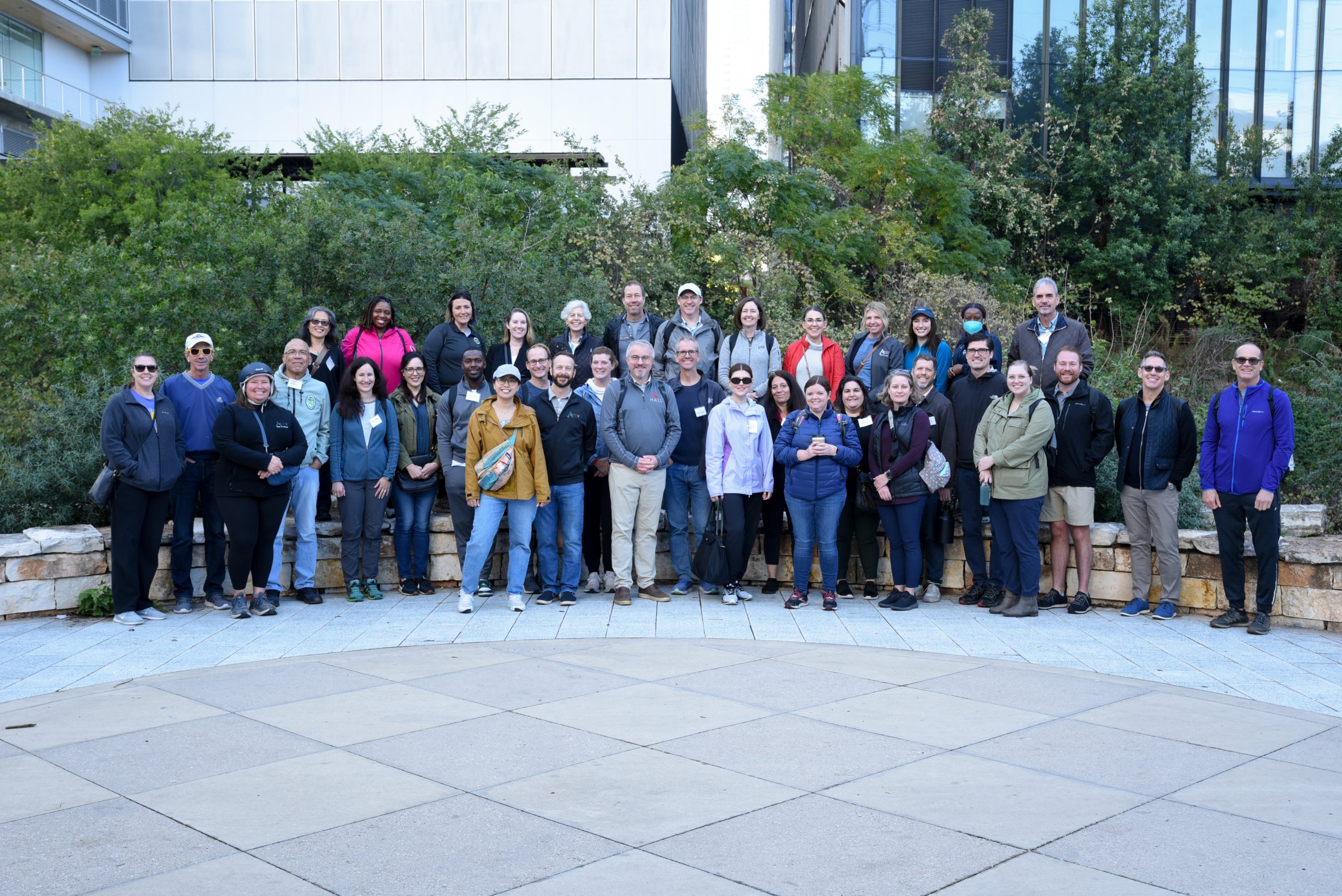
By Lisa Casey, Associate and Landscape Architect at Studio Outside in Dallas, Texas.
A mentor once described the next level of building professional relationships as when you know not only the people in the room but also the relationships that they have with one another. It is like a highly interconnected web that becomes visible when you walk in, and then you can have the most impact by helping people move great ideas forward.
It was not until this past month that I thought about that concept again, but in the context of organizations linked in powerful ways to leverage meaningful change. On a recent fall weekend, I saw this living system with organizations in action during City Parks Alliance’s City Tour of Austin.
The hub of it is Christine Chute Canul, the partnership manager at the City of Austin Parks and Recreation (PARD). She is responsible for coordination across all organizations that work with PARD. One group that makes her life easier is the Austin Parks Foundation, a robust non-profit with decades of collaboration with PARD and a focus on bringing great parks to all Austinites.

The full tour group poses along Shoal Creek Trail.

Jennifer Potter-Miller, Friends of Patterson Park Chair, shares her passion for the space with tour participants.
Among their offerings is the Adopt-a-Park Program, which gives neighborhood park groups the structure, support, and, if needed, a place to set up a bank account for fundraising. We met the energetic Jennifer Potter-Miller, a neighbor with no prior background in parks who wanted to improve Patterson Park. Her love and pride over the enhancements, such as a new playground, were heartfelt and a good reminder of why we do the work that we do.
PARD and the Trail Conservancy (TLC) gave us an exclusive sneak peek into the Seaholm Intake, a massive American Art Deco structure designed in the 1950s to pull water from Lady Bird Lake for a nearby power plant. With Phase 1 of revitalization recently wrapped, plans are in the works for the next phase. The reimagined infrastructure will include a unique lakeside overlook, coffee shop, and dock for water access. TLC will maintain the space for the public for free. PARD allows the conservancy to rent Seaholm Intake for a highly limited number of days to offset that cost.

The group takes a look at the Seaholm Intake interior.
The art behind these partnerships rests with a codified process that went into effect last year. Working through the City’s legal department through a multi-year process, Christine and her team have created a system that qualifies what a partnership with PARD is. Tier A, B, and C partners have requirements, responsibilities, and benefits identified. Tier A carries with it the ability to fundraise exclusively in the park, for instance. It’s a thoughtful approach to optimize the good for the public while still empowering non-profit organizations to fundraise for enhanced park maintenance costs that PARD itself could not cover.
Although the architectural critic Colin Roe in his essay “Program versus Paradigm,” wrote of the comedy in imposing a Utopian grid on the hilly northern side of the Colorado River to create Austin, its citizens have rediscovered its many waterways that flow into Lady Bird Lake including Shoal Creek and Waller Creek. We felt the cool morning air and saw late fall blooms while walking alongside Shoal Creek. The painterly application of native plants alongside the immense infrastructure at Waterloo Greenway that redirects Waller Creek is also not to miss. The vision of Waterloo Greenway elevates Austin to a handful of American cities providing notable urban park space at the highest level.

Plants thrive at Waterloo Greenway.
Pease Park pulls it all together, however. Heath Riddles Sanchez and Chuck Smith were kind enough to host us for a luncheon in the mild afternoon light on the patio of the Tudor Cottage, even with Luminarium, their annual fundraiser, only hours away. As we stepped within the sensory-defying treehouse, where we could see the ground far below between the ropes of a built-in trampoline, a volunteer was blowing up clear plastic balls in preparation for that night. It all made sense.
By PARD providing a partnership structure with clear boundaries and the Austin Parks Foundation giving care for the overall system, these highly focused individual conservancies were further elevating moments unique to Austin at a world-class level. Throughout two days of walking the parks and listening to many leaders, the interconnectedness and strength of a web, as my mentor once mentioned, was apparent. All of us attendees can replicate some aspects of that process as we return home.

The treehouse a Pease Park is a refuge for all.
City Parks Alliance shines a spotlight on innovative urban park systems through its park study tours. The tours are two-and-a-half-day events developed in partnership with host cities designed to highlight the people, places, and partnerships that make their park system special and that contribute to vibrant, healthy, and equitable communities. Questions? Email programs@cityparksalliance.org or click the button below to learn more.




